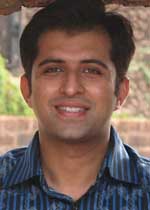|
Politics of
Terror: Assassins in UP!
Is it a Politics of Terror
or Terror of Politics.
Mayawatiís apprehension
about her own assassination may not be unfounded, but just a simple blame
game may not just work for her. Because itís her state which she has to
get a hold of. Because the terror breeding grounds in Uttar Pradesh are
already hyper-active and someone has to take the responsibility and get
going. Failure of Intelligence or Not, Uttar Pradesh has to gear up itís
machinery to tackle the menace. Otherwise everything is imminent, so to
say. The only way to save yourself is to save the world. Political Agenda's
in the garb of terrorism can be implemented, only if you let it get out
of hand. If you can control your state and it's affairs, political machinations
will be difficult and far fetched.
Indian today is a object
for terrorist attacks. Guwahati, Hyderabad and Gorakhpur are immediate
indications in the lengthy war that India has been combating against terrorism.
Current indications point two things. First, that terrorism is in a position
to target religious places with the purpose of creating communal tension.
Second, use of technology to maintain an element of surprise means that
the state will have to improve its security measures for defensive strategies.
Indiaís intelligence agencies
need to be focused on identifying terrorist organizations and their cells
within India. Generally one can differentiate between those organizations
which are Islamic fundamentalist groups with cross border affiliation,
like the Lashkar-e-Taiba. These groups are today active all over India,
as was witnessed in Malegaon last year and possibly in Hyderabad more recently.
Then there are home grown organizations like the Students Islamic Movement
of India (SIMI), which have developed along conventional lines and have
parallel patterns of recruitment, as do the cross-border affiliated groups,
operating in J&K and other parts of India.
|
|
Take the instance of UP.
The Union government has been sensitizing state governments about the activities
of ISI. Periodic coordination meetings are held with the state governments
for sharing inputs from various quarters as well as devising strategies.
Thereís little risk in planting bombs outside court buildings, especially
in Uttar Pradesh, where the state government itself says 34 of 70 districts
have been penetrated by terrorists.
To take a long-term view
of terrorism and its management is important to understand the nature of
terrorism and itís rapidly changing forms. This is not easy because of
the dynamics that make developing of a system difficult. Extended southern
Asian region, comprising Xingjian, Central Asia, Afghanistan, Pakistan,
India, Bhutan, Nepal, Bangladesh, Sri Lanka and Myanmar, are presently
the main cauldron of Islamic and separatist terrorist activities. |
Bruce Hoffman's well-written
book provides useful insights into the tactics and technologies used by
terrorist groups and the historical evolution of terrorism. Particularly
cogent was his observation that the way the media covers subguerrilla attacks
-- especially coverage that focuses on the human-interest aspects (for
example, the emotions of the relatives of hostages) -- makes it easier
for the attacker to manipulate events and severely constrains government
options to respond to the attack. He also shows that subguerrilla attacks
many times fail to engender the sympathy of the wider public, but they
do instill fear sometimes bordering on the irrational (for example, one
terrorist incident, although unlikely to recur, can cause mass cancellations
of trips overseas, etc.). Hoffman also notes that religious subguerrilla
groups may have fewer compunctions about inflicting heavy casualties, making
their use of weapons of mass destruction more likely. The author argues
correctly that with the increased willingness to use weapons of mass destruction,
many of the rules of "terrorism" may need to be rewritten (Brian Jenkins'
premise that "terrorists" want many people watching, but only a few dead).
|
|


